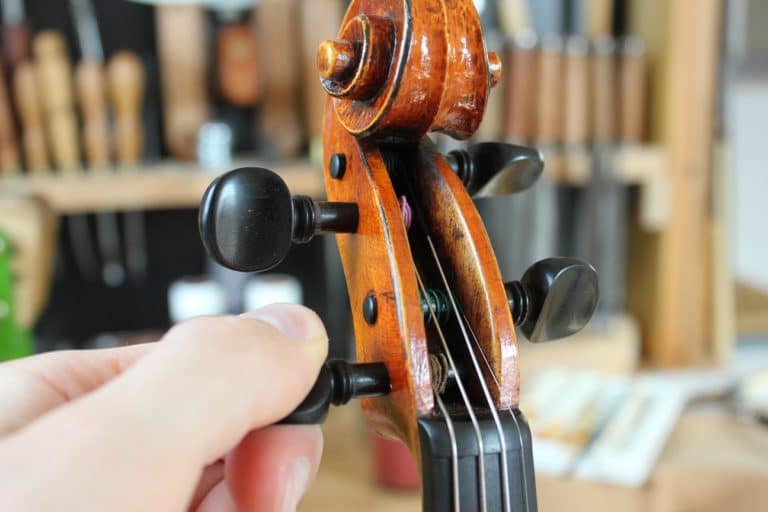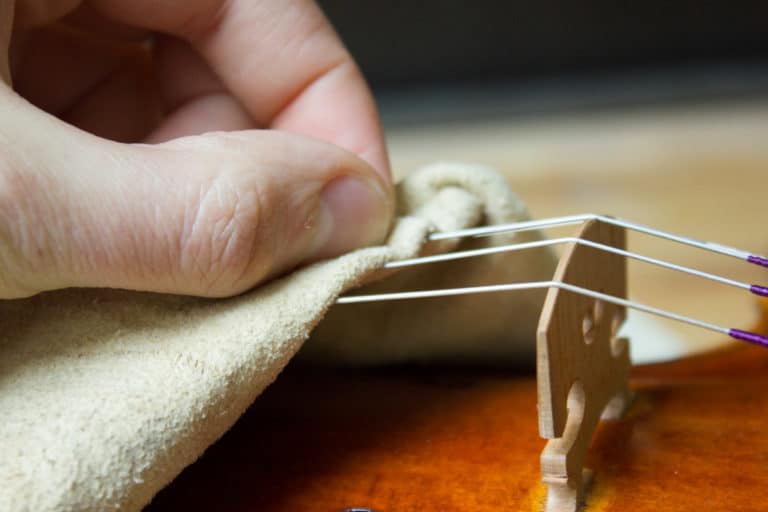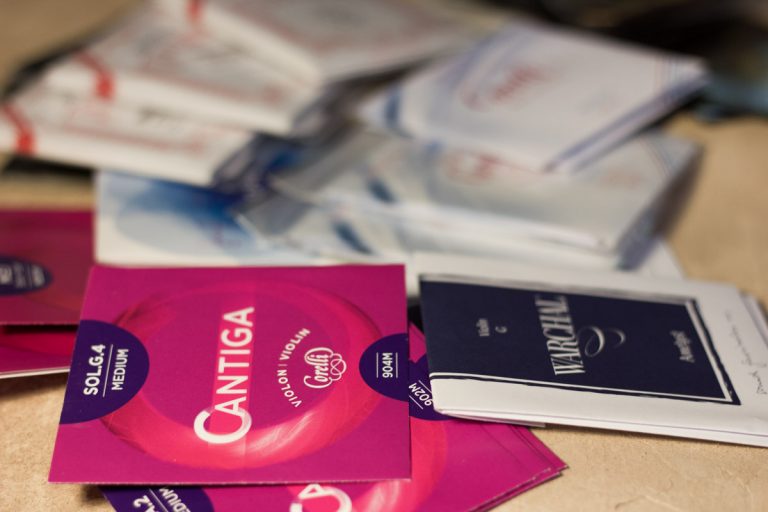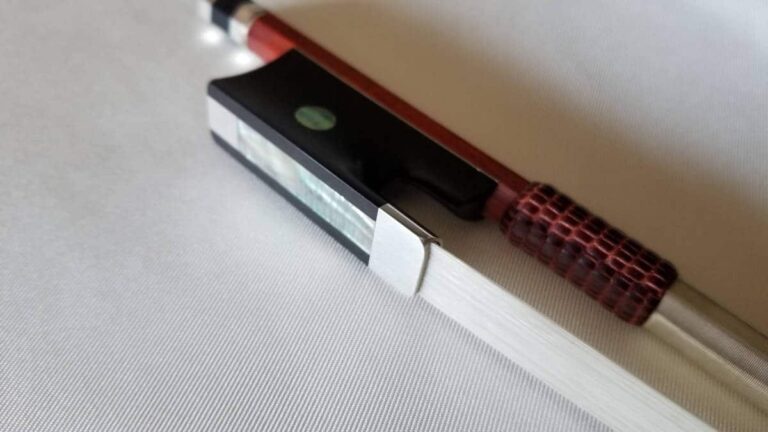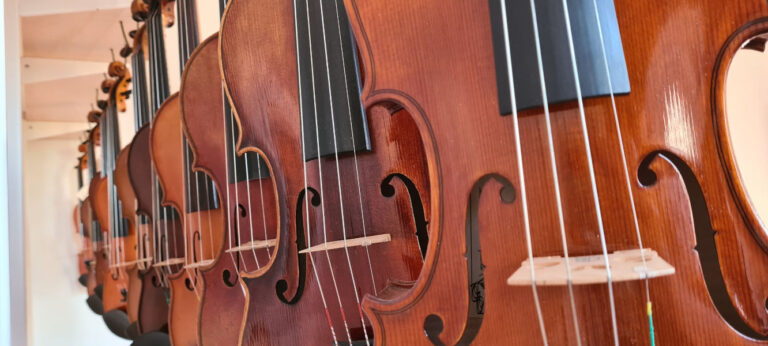Have you been considering finally taking the first step to learn to play the violin? Don’t worry, it’s normal to feel overwhelmed at first. Even though this is my job, I still struggle to master the hundreds, perhaps thousands of aspects of the violin. It is for this exact reason that I would like to share some helpful tips for choosing your first violin in the hopes that you’ll start your musical journey off on the right note.
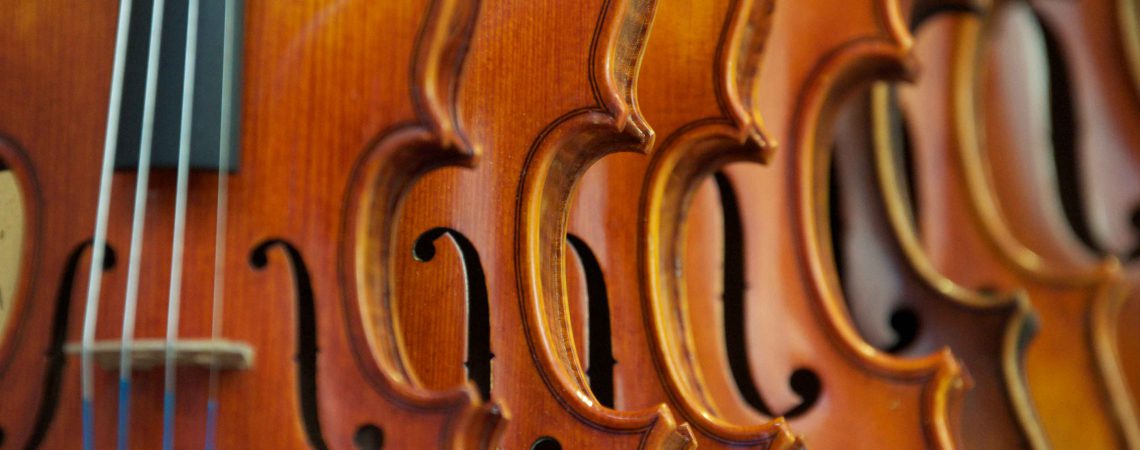
Choosing your first violin
How much does a beginner violin cost?
Budget is a determining factor in choosing a first violin. However, keep in mind that it’s possible nowadays to become a violinist at any price point. With just a few clicks of a button, it’s as easy to find ready-to-play violin sets for less than €100 as it is to find individual violins priced in the thousands. Also, there are no rules about how much you’re required to spend at the beginning; it all comes down to your budget. However, it should be noted that inexpensive instruments are not always very sophisticated, sometimes to the point of being completely unusable. Problems with low-cost instruments can include:
- Unpleasant tone quality
- Difficulties with tuning
- Problems with instrument assembly
You can purchase your first violin online at very low prices (€150 or less). However, keep in mind that most of the time, no real work has been done on these instruments. If you’re lucky, you will end up with a violin that functions properly. And if not, return it and ask for an exchange. This way, you can at least begin learning violin even on a very limited budget.
Of course, you are more likely to get personalized service in specialized online shops. The costs will be a little higher (€400 or less), but the violins will be higher quality and offer a more pleasant all-around musical experience.
You can of course begin with a high-quality instrument to be guaranteed an excellent experience both in terms of ease of play and overall sound. And if you’re working with a higher budget (€1,000 or more), you can consider purchasing a high-quality instrument that will serve you for many years to come.
Where should you purchase your first violin?
To begin, you have two options: purchasing your instrument in a local music store or online. Each has its pros and cons that I won’t be discussing here. But just keep in mind that nowadays, the possibilities are endless. Indeed, many of my clients travel great distances to come see me and sometimes, my violins make long trips to reach their new owners thanks to the delivery companies we work with.
Choosing and purchasing your first violin
Buying a violin is a considerable short-term investment which gradually pays off over time. That said, there will continue to be costs involved for the maintenance of the instrument. Indeed, certain instrument parts will also need to be changed from time to time, such as the strings, the bow and the rosin.
I encourage you to take a look at the special beginner packs that I offer, which provide you with all the beginner violin essentials. In fact, further on in this article, I will explain the various elements needed to begin playing the violin. However, my beginner packs already provide everything you need to start, so you won’t need to keep researching once you have your starter pack.
Choosing your first violin when renting
Renting is a relatively flexible and cost-effective way to try out high-quality instruments. Additionally, it can be useful when growing children need to transition between instrument sizes. This is also a nice way to try out multiple instruments over the course of time.
In my store, we offer instrument rentals that are non-binding and can be cancelled at any time. Maintenance is included and I provide an annual check-up and replacement of strings and bow hairs if necessary. Additionally, each contract includes a lease-purchase opportunity, meaning that at any given time you can transfer part of the monthly payments you have made thus far into a coupon to purchase one of our instruments in the store.
[iconbox icon=”kt-icon-music” link=”https://www.guillaume-kessler.com/boutique/rentals/rent-a-violin-online” color=”#ffffff” background=”#b28e40″ hbackground=”#ddbd8b” tcolor=”#000000″]
Reserve your violin now!
[/iconbox]
Choosing your first violin
For those of you desperate to know how to find a good violin, I have included a summary of tips here. By reading these tips, hopefully you will be able to find your instrument sooner and avoid making any beginner’s mistakes!
What to look for in a beginner violin
- Above all, look for instruments sculpted with solid woods, like spruce or maple. At a beginner level, wood origin isn’t crucial.
- Look for violins that have been assembled using traditional hot glue techniques. This ensures easier future maintenance of the instrument.
- Look for violins that have a well-applied varnish (oil or alcohol base) and avoid thickly layered varnish. A well-applied varnish allows the wood to breathe and can be touched up easily if the instrument is damaged. Alternatively, if tone quality is not of great importance, you can choose a nitrocellulose lacquer if you want an instrument that is basically indestructible.
- Purflings should be inlaid and not just roughly drawn around the edges. This is important both for the instrument’s sound and its overall appearance.
- Look for accessories made of ebony or rosewood that aren’t roughly designed. This include the pegs, chin rest, knob, etc. (avoid plastic or painted wood).
- On the topic of wood: if “hardwood” is mentioned in the title, it means that it can be pretty much any type of wood with a layer of paint on it.
- Look for a proper assembly with quality bridges (such as Despiau, Aubert, Milo Stamm) and a well-fitted soundpost (Note: a higher budget is necessary for these features).
- Look for a tailpiece which matches the other components (ebony or rosewood) or a composite tailpiece with integrated adjusters for practicality.
- Last but not least, look for reliable, quality strings such as those manufactured by Thomastik, Warchal or Pirastro. Strings can easily be changed, so don’t worry too much about getting it right the first time. To read more, follow the link to my article on the best violin strings.
You do not need to checking off every single one of these boxes, as everything will depend on what kind of budget you’re working with. However, the more you can meet the criteria above, the fewer problems you’ll have in the long run.
Choosing a beginner bow
It is simply impossible to play the violin without a proper bow. And yet this is often an afterthought for those newly discovering the world of violins. While it’s true that a good bow can easily be more expensive than the violin itself, fear not; even good bows can be found at reasonable prices. You just need to trust a dedicated professional or know where to look.
In many sets (a set refers to the following four elements: a violin and its violin case and a bow and its bow case), there is a bow included that is generally perfectly acceptable for use by beginner players. If it isn’t already included with the violin, depending on your budget, you can buy a perfectly acceptable beginner’s bow for between €50 and €100.
If you have the opportunity to try out some different bows, pay attention to their weight and get a feel for how balanced they are. It can certainly be intimidating to judge a bow without any prior experience. However, I can assure you that you’ll instantly feel the difference between various bows when holding them.
You can either choose a bow made of wood or of carbon. Carbon bows do generally offer much better value for money, falling in the €50-200 budget range. But with a bigger budget, you might consider purchasing a pernambuco bow, which are preferable to carbon bows.
Also, don’t forget that bows also have their own maintenance requirements. You can find out more in the article below:
[blog_posts items=”1″ orderby=”date” ids=”1772″]
Cases: essential accessories
Once you have chosen your first violin, it’s important to find a case for it. This will certainly help protect your violin from damage, bad weather and other mishaps. It is also a great way to store the instrument when it’s not in use.
- Soft cases: Although they are less expensive, soft cases are not advised for such delicate instruments. They do not really protect your instrument from getting damaged, and trauma of any kind can easily affect the violin’s assembly.
- Wood cases: An old, cumbersome wooden case is like a fortress; hardly anything can penetrate its thick shell. However, the inside of this type of case is not well padded, which puts the instrument at risk when transported.
- Modern cases: Modern cases offer the best of both worlds, combining lightness and inner padding to guarantee optimal protection of your instrument. They often include a compartment for bow storage as well as for other accessories and even sheet music.
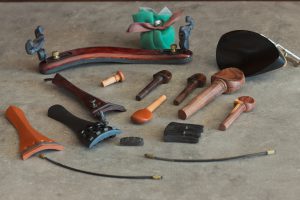
Accessories
Below are some accessories that are not necessarily mandatory but are recommended by most teachers. There are many different models our there, each of them deserving of its own article. However, we will only briefly discuss them here.
- Shoulder rest: ensures that the instrument sits well on your shoulder. Kun and Wolf models are both very popular brands.
- Chin rest: a piece of wood or wood composite that fits the shape of the chin or jaw. It should be adapted to your unique body type.
- Rosin: this allows the bow hairs to grip the strings. If you are just learning how to play, you don’t need to dwell too much on this. A standard rosin will do the job.
- Tailpiece: for example, a Wittner composite (or the equivalent) with fine tuners on each string is standard.
- Tuner: this tool will allow you to easily keep your instrument in tune.
- Metronome: learning rhythm is accomplished mainly by using this ticking device.
- Mute: allows the volume to be reduced by adding weight to the bridge so you can practice without disturbing your neighbors.

